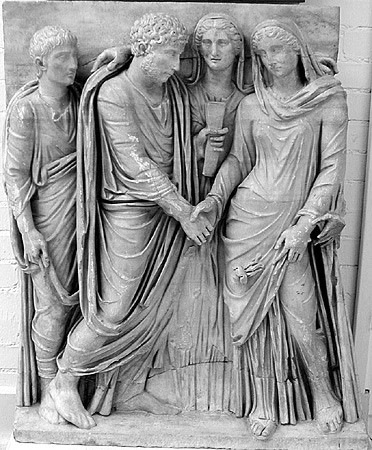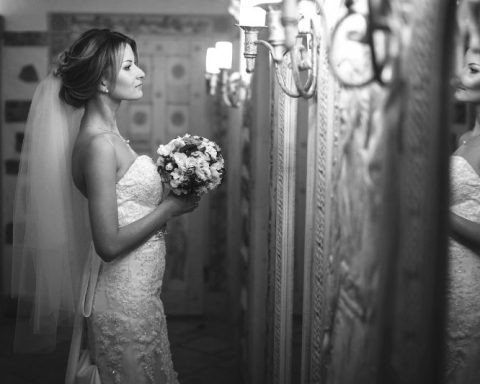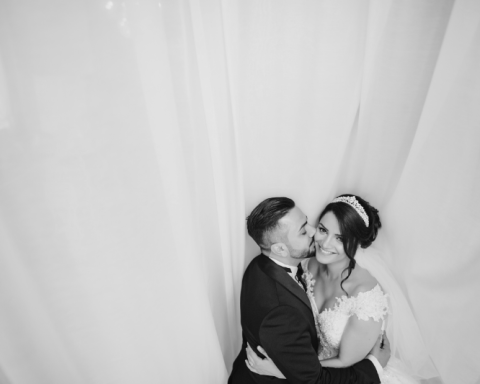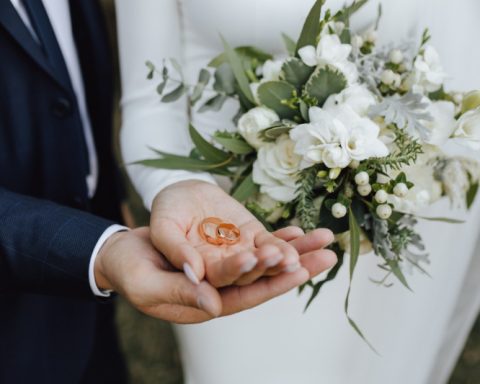Marriage is a universal institution that occurs across eras and cultures — a social, legal, and spiritual reunion that has evolved over time. It plays an important role in shaping societies.
Initially, it was a way of securing alliances and consolidating power. Today, across the world, marriage is an institution undergoing significant changes. Some view these changes as a sign of progress and inclusivity, while others see them as a challenge to long-standing traditions.
To understand the importance of these shifts, it is important to understand marriage as an evolving institution shaped by historical, cultural, and societal forces. This article offers a broader perspective on how marriage has adapted over time. It will help you make sense of the changes unfolding today and consider what that might mean for the future.
As you read below, consider how these historical influences continue to impact modern marriage. Also, reflect on how these changes affect your own perspectives on marriage, relationships, and societal norms.
The earliest forms of marriage
The history of marriage is as old as human society.
In the beginning, marriage was not a union between two individuals; rather, it was a social contract that helped them organize and get settled in their communities. Marriage, at that time, was considered a way to secure an alliance and ensure the survival of the group.
Most of the marriages at the time were polygamous (meaning one individual, typically a man, had multiple spouses), reflecting the need to have the most offspring and strengthen family ties.
Marriage was not based on romantic love; rather, it involved an exchange of goods, property, or services, which served as economic security for the bride and her family.
Also, marriages were not permanent; they were temporary arrangements lasting as long as they could benefit both parties.
Marriage has been an important part of human societies for centuries, evolving alongside changes in society, culture, and economy. While its purpose and structure have shifted over time, the institution has always played an essential role in shaping communities and defining relationships.
Understanding the origins of marriage gives valuable insight into why it has transformed over time. By exploring the historical foundations, you will better understand the forces that influence marriage’s evolution and gain a clearer perspective on the significant changes happening today.
Prehistoric and ancient marriage practices
Marriage has existed for millennia, evolving alongside human civilization. Its emergence has been noted from early humans over 300,000 years ago to the development of writing around 3,000 BCE (Before Common Era) with marriage being recorded in early civilizations like Mesopotamia, Egypt, and China, from approximately 3,000 BCE to 500 CE (Common Era).
As human societies evolved from nomadic hunter-gatherer groups to more settled agricultural communities, the institution of marriage became more civilized. Prehistoric and ancient marriage practices differ across cultures and regions but share some similarities.
For example, in ancient marriages, marriage was not between two individuals but rather between the whole community. This was to secure the prosperity and survival of the community, as set by the group’s leaders.
Marriage in ancient Mesopotamia
In ancient Mesopotamia (one of the earliest civilizations), marriage was a way to set alliances between families, and dowries played a significant role. For example, a rich family might offer a large dowry, including land, livestock, precious goods, etc., to strengthen their bond with a family of similar or higher status.
The dowry ensured that the bride owned some property and resources within the marriage. It also served as a symbol of prestige and the family’s wealth. In some cases, dowries were so important that they could influence political or economic alliances, as families sought to align themselves with powerful or influential groups through marriage.
This marriage was also tied to social status and property rights, with elaborate laws governing the rights and responsibilities of spouses.
For example, in Babylon, one of the major city-states of ancient Mesopotamia, the Code of Hammurabi (circa 1750 BCE) established detailed laws regarding property and marriage. This legal code protected a wife’s financial interests by allowing her to reclaim her dowry if her husband wronged her, ensuring that marriage functioned as a social institution and a legally binding contract.
Another example involves inheritance rights. A wife could inherit property if her husband died, especially if they had children, ensuring her continued social standing and economic security.
Furthermore, if a man wanted to marry a second wife, the law required him to provide financial support to both wives, reflecting the importance of property rights and fairness in these unions.
These laws ensured that marriage was not just a social institution but also a legal contract, reinforcing social status and protecting family wealth and property.
Marriage in ancient Egypt
In ancient Egypt, marriage helped identify a family’s structure and inheritance.
Egyptian marriages were monogamous, but the elites practiced polygamous marriages. Their marriages were mainly arranged, carefully considering the social and economic benefits. They often included divorce, which was common in Egypt and could be initiated by either husband or wife.
One famous historical example is the marriage of Queen Nefertiti to Pharaoh Akhenaten. This marriage was arranged for political reasons. While polygamy was allowed, especially for the elites, monogamy was more common. Divorce was also a relatively common practice, with women having the legal right to initiate it.
This indicates that despite the patriarchal nature of Egyptian society, women had a notable role in marital matters. Wives were often granted property rights after divorce. Despite the importance of marriage, love and affection were often depicted in Egyptian art and literature, suggesting that emotional bonds were also valued within the marital relationship.
Marriage in ancient Greece
In ancient Greece, marriage was an institution to maintain social order and family lineage.
They were arranged by the families of the bride and groom, with a heavy emphasis on dowry. Dowry was the key element as it indicated the economic security and value of the bride. The women had limited rights; their primary role was managing the household and bearing children.
An example is the marriage of Helen of Troy to Menelaus in the Greek myths, which was arranged for political and social reasons and emphasized the role of marriage in establishing relationships between powerful families in their culture. In The Odyssey, Penelope’s dowry also highlights the importance of this concept in ancient Greek society.
Social and religious customs also greatly influenced Greek marriages. Weddings involved rituals and offerings to the Gods, which indicated that marriage was a sacred union.
The wedding of Alcestis and Admetus (another Greek myth), where Admetus led her to sacrifice her life for him, illustrates the valued but secondary role of affection in marriage. Marriage is displayed as a sacred union for both society and the divine. Though love was not the primary foundation of marriage, ancient Greek literature often idealized emotional connections within marriage.
The role of women in marriage was complex, as they had to bear the children and act as the keepers of the family’s honor as well. While love was not the primary basis of marriage, in ancient Greek literature, it is an ideal to inspire within the marital relationship.
Roman marriage laws and customs
In ancient Rome, marriage was a legal and social institution and had significant implications for family structure, property rights, and social status. Roman marriage laws were complex and continued to change over time.
The concept of ‘conubium’ was central to Roman marriage. It referred to legal rights to marry and produce legitimate children. Only those with conubium could enter into a legal marriage, which was important for passing on property and social status. Roman marriages were arranged by families, with the benefits being the priority rather than the consent of the bride or groom.

A famous example of this concept is the marriage of Julius Caesar and Cornelia. Caesar married her because of her patrician family background, which secured him political alliances and ensured that any children from the union would have legitimate status and inherit rights under Roman law.
Legal and social aspects of Roman marriage
Other practices in the history of Roman marriages included the practice of ‘manus’.
The wife legally became subject to her husband’s authority. However, this practice declined over time. By the late Republic, many marriages were ‘sine manu’, which meant that the wife remained under the authority of her father or guardian even after marriage, not her husband.
For example, if you look at Roman emperor Augustus’s marriage to his first wife, Scribonia, she would have been under his control during their marriage. However, as this practice declined, many elite marriages were sine manu, and so Augustus later married Livia Drusilla in a sine manu marriage, allowing her to retain her wealth and familial authority.
Marriage contracts were also common in Roman society. These contracts outlined the rights and obligations of both the bride and the groom. The contracts also included the right to divorce, which any of the spouses could initiate. Marriage was common and, therefore, not stigmatized in Rome. This indicated that the focus of marriage was only on economic and social benefits and not the emotional bond.
Still, Roman love depicted love in their literature in the idea of marriage. Roman literature, like Ovid’s Metamorphoses, idealized love within marriage, suggesting that while marriage was a contract, emotional bonds were also valued.
Marriage in the Medieval and Renaissance periods
The marriage customs in the Medieval period (approximately 5th to 15th century) and the Renaissance period (14th to 17th century) depict the changes in society, culture, and religion in these eras.
In medieval Europe, Christianity had a significant impact on marriage. The Church played a central role in establishing rules regarding marriage and divorce, who could marry and who could not, etc. These practices still influence marriage today.
Medieval European marriage customs
Medieval European marriage customs were deeply influenced by Christianity and societal structures.
Marriage was primarily a means to secure alliances, consolidate power, and ensure family lineage, with arranged marriages being the norm. Although the consent of the bride and groom was involved, it was often secondary to the political or economic benefits the union brought to the families.
The custom of handfasting was a small ceremony in which couples publicly pledged themselves in front of witnesses, often in a ceremony led by a priest or community leader. Dowries also played a crucial role, with the bride’s family providing property or wealth to the groom’s family.
The Church’s influence made marriage a central institution with strict rules, including a lifelong bond and few avenues for divorce, although annulments were permitted under specific conditions.
By the Renaissance, significant changes emerged in marriage practices. Personal choice and affection began to play a more important role in marriage decisions. While arranged marriages were still prevalent, the love and consent of both partners gained increased recognition, reflecting a shift in values surrounding marriage.
The influence of Christianity on marriage
Christianity had a big impact on the history of marriage. The Christian Church emphasized the sacred nature of marriage and considered it an inseparable union, which was a reflection of Christ and the Church.
This theological perspective had a profound impact on the way marriage was perceived and regulated in Christian societies.
The Church established strict rules about who could marry, and the marriage was conducted in the presence of a priest and witnesses. It was considered a sacred relationship, and divorce was deeply discouraged. The Church only allowed annulments when the marriage had not been consummated or when there was evidence of coercion or fraud.
Queen Isabella of Castile and King Ferdinand of Aragon in 1469
Christianity shaped the institution of marriage by emphasizing its sacred nature. The Christian Church viewed marriage as a reflection of the bond between Christ and the Church, reinforcing the idea that marriage was not merely a social contract but a divine covenant.
As Christian influence grew, strict regulations were established regarding who could marry and under what conditions. Marriages had to be conducted in the presence of a priest and witnesses, reinforcing their sacred status.
Look at the marriage of Queen Isabella of Castile and King Ferdinand of Aragon in 1469. This union was important not only for political purposes but also because Christian ideals had a strong impact on it.
The marriage was conducted in the presence of a priest and reflected the Christian principle of an inseparable union. From both a political and spiritual point of view, this marriage was seen as a divine mission, which was important for the union of Spain and Columbus’ voyages.
The creation of the Church of England
The Christian Church also had strong opinions about divorce, which affected marital practices. In 1953, in a significant case, Henry VIII of England struggled to annul his marriage to Catherine of Aragon. Henry wanted an annulment because Catherine had failed to produce a male heir.
The Church, however, refused the request, as their marriage had been consummated, and annulments were only granted under very specific conditions, such as non-consummation or evidence of coercion or fraud.
This refusal led to the creation of the Church of England, which would eventually allow divorce, underscoring how Christian teachings on marriage deeply affected both individual lives and entire societies.
The church on marital roles
Christianity also affected the roles of spouses. Chastity, fidelity, and mutual respect were emphasized. The ideal marriage was one in which both partners supported each other and fulfilled their roles in the family.
The writings of St. Augustine depict the actual meaning of marriage from a Christian point of view.
He argued that marriage was a sacred bond where both partners were to practice mutual respect, support each other, and remain faithful. He believed the ideal marriage should be built on spiritual and emotional support.
This principle guided marital roles for centuries in Christian communities across Europe.
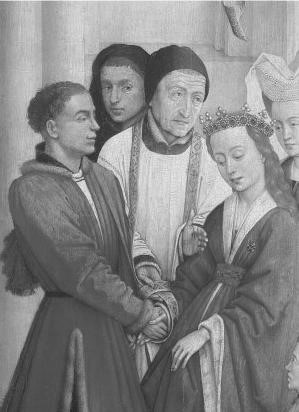
Renaissance shifts in marriage practice
During the Renaissance, the Protestant reformers challenged the marital laws and practices of marriage of the Christian church.
They argued that marriage was a secular institution, and they proposed the demand for marital laws that allowed greater freedom and choice, including the legalization of divorce and the choice of marriage partners.
The emphasis on personal choice and individualism greatly focused on marriage’s emotional and spiritual aspects. The mutual respect between the partners continued to grow. These changes were also reflected in their literature, art, and philosophy, where marriage was shown to be based on love and mutual respect.
Marriage in the Industrial Revolution
The Industrial Revolution (18th–19th century) further transformed marriage by promoting the nuclear family system and shifting gender roles. As urbanization and factory economies grew, working-class women entered the workforce, while middle-class women focused on homemaking.
Legal changes allowed greater freedom in partner selection and made divorce more accessible, reinforcing the idea of marriage as a personal commitment rather than a rigid social contract.
During this era, the idea of marriage based on love and mutual respect gained more importance, challenging the traditional views of marriage. During the Industrial Revolution, marriage was no longer a means to support economic stability but was about companionship and emotional support. It focused on domesticity and the nuclear family system.
Marriage had greater freedom then. This allows people to choose their partners, legalizes divorce in most parts of the world, and ensures marriage equality.
Marriage became more focused on personal choice and individual fulfillment during the Enlightenment and the Industrial Revolution.
Impact of industrialization on marriage
Industrialization during the 19th century impacted the structure and practices of marriage, especially in Europe and North America. Urbanization and factory-based economies had risen, and many families moved towards industrialized cities. At this time, the role of spouses also shifted, and so did the dynamics of marriage, with women also working in industries.
For example, marriages reflected economic realities during the Industrial Revolution in England. Women from working-class families worked in textile mills or domestic services, while women from middle-class families stayed at home. This practice created a separation between work and home spheres, and so the gender roles in marriage shifted.
Marriage in the early modern period
A great transformation in marriage practices was seen from the late 15th to the early 18th century.
It was largely driven by the Enlightenment’s emphasis on the rights of individuals, the rise of nation-states, etc. During this time, marriage was greatly recognized as an institution of personal choice and mutual consent.
Legal reforms in marriage
Marital laws were also changed. Women were given more protection in marriage, and people were given the choice of their own partners. Women were also given inheritance rights in marriage contracts and divorce. All this laid the groundwork for reforms in the 19th and 20th centuries.
In the past, dowries were a common tradition in many cultures, including Europe, the Middle East, and South Asia. This meant that the bride’s family would give money, goods, or other valuable items to the groom’s family as part of the marriage agreement.
However, this practice has mostly disappeared in modern times, especially in Western cultures. Instead, prenuptial agreements have become more common, serving as a legal way for couples to arrange financial matters before marriage.
A prenuptial agreement is a contract between spouses created before entering into marriage. It includes how property, assets, and financial matters would be handled and divided if the marriage ended in divorce.
For instance, prenuptial agreements became more prominent in the U.S. in the late 20th century. They were considered a way to protect individuals’ assets, especially if one person who entered the marriage was wealthy.
This shift reflects the evolving perception of marriage as a partnership of equals, where both parties have a say in how resources are shared or divided.
Colonial and early American marriage customs
The traditions of Europe deeply influenced Colonial America.
Marriage was seen as an essential social institution that played a major role in maintaining societal stability and order. While marriages were settled by the family, love and affection were emphasized in the marriage, reflecting both the ideas of the Enlightenment and religious beliefs.
In early America, marriage laws were greatly impacted by English common law. They highlighted different aspects of marriage, such as the rights and duties of spouses, the legitimacy of children, and the distribution of property upon death or divorce.
Religion also influenced this, as most marriages were conducted by a minister or magistrate and registered with local authorities.
The Napoleonic Code and marriage
Napoleon Bonaparte had a significant impact on the legal history of marriage. The code was the first legal framework for marriage, divorce, property rights, and more during those times.
Under the Napoleonic Code, marriage was seen as a civil act conducted by the state rather than the church. Clear rules about the formalities of marriage were highlighted, including requirements for the following:
- Public ceremonies
- Registration of marriage
- Mutual consent between spouses
- Protection of property rights within marriage.
One of the most important aspects of this code was divorce, which was legal under circumstances like adultery, cruelty, or desertion. A code for the division of property and the custody of children during divorce was also established.
The impact of this code extended beyond France and served as a model for many European countries.
Marriage in the modern era
The 19th and 20th centuries saw some major changes in marriage practices.
The rise of feminism changed this institution, changing the legal status of women and shifting the norms of culture and society. At this time, love and companionship were considered the basis for marriage.
Divorce was legalized in many parts of the world, and reforms were made that gave women more rights in marriage. Marriage became more focused on individual fulfillment and personal choice. Traditional roles were challenged, and the importance of emotional and sexual compatibility within marriage also changed the way it was practiced.
Same-sex marriage has become more accepted, and laws about marriage have changed in many parts of the world to recognize these unions.
19th-century marriage reforms
The 19th century brought major changes in the history of marriage and gave women rights. Industrialization and urbanization led to growing legal reforms and granted women greater rights and protection in marriage.
The Married Women’s Property Act allowed women to own and control property independently of their husbands. For example, in the United Kingdom, the Married Women’s Property Act of 1870 allowed women to retain their earnings and inheritances, while the 1882 Act expanded these rights, enabling them to buy, sell, and manage property without male oversight.
These legal reforms marked a significant step toward gender equality in marriage. They gave women a unique position in marriage and their rights and interests.
Changes in social norms also influenced the evolution of marriage. Increased emphasis on domesticity, the nuclear family system, and the idea of marriage based on love, companionship, and respect influenced marriage.
This was highlighted in their art, literature, and culture, where marriage was shown as a partnership based on emotional connection.
20th-century changes in marriage laws
The 20th century brought significant changes in marriage laws, reflecting individual rights and gender equality.
No-fault divorce was introduced, allowing couples to divorce each other without the need to prove any party’s wrongdoing. This made marriage a lifelong commitment and reflected the growing emphasis on individual autonomy and personal fulfillment within marriage.
Same-sex marriages were introduced in many parts of the world, reflecting changing attitudes towards sexuality.
These changes in marriage laws were accompanied by broader social and cultural shifts, including the increasing recognition of women’s rights, the rise of the feminist movement, and the growing emphasis on personal choice and individual rights within marriage.
The influence of religion on modern marriage
Although the role of religion diminished in many parts of the world, in some areas where religious teachings are central, it remains a significant factor. It is still viewed as a sacred reunion between two people, with fidelity, chastity, and mutual respect being the foundation of marriage.
Religion influences many issues such as divorce, same sex marriage, polygamy, and the rights of spouses within marriage in different societies and cultures.
In many parts of the world, religion still plays a central role in shaping marriage practices, values, and laws. For example, in Muslim countries like Saudi Arabia, marriage remains deeply connected according to the teachings of Islam.
Marriage in Islamic societies
The nikah (marriage contract) is seen as a sacred agreement, which emphasizes fidelity, chastity, and mutual respect between both partners. Islamic law (Sharia) has a great impact on various aspects of marriage, including the rights of spouses, rules on divorce (such as talaq or khula), and inheritance rights within the marriage.
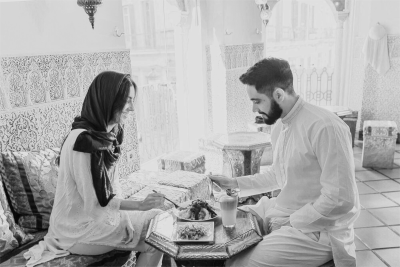
Religion also opposes same-sex marriage in certain religious communities. For example, in the United States, same-sex marriage was legalized in 2015, but many religious groups, especially conservative Islamic and Christian communities, continued to oppose it.
Religious freedom and its impacts on marriage
Some states even introduced “religious freedom” laws allowing individuals to refuse services for same-sex weddings based on their religious beliefs. This shows how religious values continue to shape societal views on marriage in certain regions.
Another issue where religion greatly impacts is polygamy. In countries like Nigeria, where both Christianity and Islam are practiced, marriage laws are practiced differently according to the religion practiced.
Islamic law permits polygamy, allowing Muslim men to marry up to four wives, provided they can treat each wife equally. Whereas, in many Christian communities, monogamy is the norm, and polygamy is prohibited.
These examples demonstrate that while the influence of religion on marriage has diminished in many secular societies, it remains a strong force in shaping marital practices, legal rights, and social expectations in regions where religious teachings are central.
Marriage and society in the modern era
The growing focus on individualism, personal choice, and feminism has greatly changed marriage practices.
These changes are represented in different forms of marriage, including same sex marriages, cohabitation, and non-traditional family structures. The women have been given greater rights in partner ownership, divorce, and child custody.
Here are some of the major trends in modern marriages.
Read more: Starting Over: The Art of Remarriage
Contemporary marriage trends
Contemporary marriage trends include a significant increase in cohabitation, where most couples live together without formalizing their relationship through marriage. This represents the decline of traditional social and religious norms regarding marriage.
Marrying later in life
Another trend set was the delay of marriage and getting married late in life, as people started prioritizing education, career, and personal development before getting married. The ongoing evolution of marriage reflects broader changes in society, including the rise of individualism, the increasing recognition of human rights, and the growing acceptance of diversity and inclusion.
Gender roles in marriage
Gender roles in marriage saw a huge shift in the 20th and 21st centuries. Women joined the workforce in bulk, and feminism continued to influence social views. Marriage shifted towards egalitarian partnerships rather than rigid and hierarchical structures.
For example, in Scandinavian countries, gender equality is emphasized heavily, and policies supporting parental leave for both parents and shared domestic responsibilities are the norm. This represents a significant departure from more traditional models where women were expected to handle domestic duties while men worked.
In Canada, parental leave policies allow both spouses to take paid leave, encouraging a more balanced approach to childcare and challenging traditional gender roles. As a result, many couples now see marriage as a partnership of equals rather than one dominated by patriarchal structures.
Read more: Living Together: Pros and Cons of Cohabitation Prior to Exchanging Rings
Cross-cultural perspectives on marriage
The cultural history of marriage provides valuable insights into how different societies regulate marriage and how marriage has evolved in response to changing social and cultural norms.
Marriage practices are different across cultures, reflecting the diverse social, religious, and historical contexts in which they have developed.
Some of the marriage practices across different cultures are mentioned below.
Marriage in contemporary Western societies
In contemporary Western societies, marriage practices and trends are shaped by a combination of historical traditions, legal frameworks, and social attitudes. While marriage remains an important social institution, there is a growing recognition of diverse family structures and individuals’ rights to choose how they wish to live their lives.
For instance, in countries like Sweden, there is a trend toward civil partnerships over religious ceremonies. Civil authorities, rather than religious institutions, conduct more than 50% of marriages in Sweden. This shift illustrates how the role of religion in marriage has diminished in many Western nations.
The secularization of society has led to a decline in the influence of religious institutions on marriage, with many couples choosing to marry in civil ceremonies. Marriage laws in many Western countries have been reformed, providing greater protections for women and children, and the recognition of same-sex marriage.
In 2015, the U.S. Supreme Court’s Obergefell v. Hodges ruling guaranteed the right to same-sex marriage across all states, providing protections for same-sex couples. This ruling marked a major moment in the history of marriage, affirming the individual rights to marry regardless of gender.
The influence of feminism and the women’s rights movement has also led to a re-evaluation of traditional gender roles within marriage, with many couples opting for more egalitarian partnerships.
Marriage in Asian cultures
In many Asian cultures, marriage remains a deeply rooted social and cultural institution, often shaped by traditional values and family expectations. Arranged marriages are still common in countries like China, India, and Japan, although the emphasis on individual choice and love is becoming more prevalent, especially in urban areas.
In India, for example, marriage is often seen as a union between two families rather than just two individuals, with significant emphasis placed on social status, caste, and religious compatibility. Also, the practice of semi-arranged marriages is common. Parents introduce potential matches, but the final decision rests with the individuals involved.
While the practice of arranged marriage is common in India, online matrimonial services have become a more modern approach.
These online platforms, like Shaadi.com and Bharat Matrimony, allow people to express their preferences online while still involving family. This reflects a blend of traditional values and modern expectations of personal choice.
In China, “face” and social reputation are crucial in marriage decisions, with families often involved in the matchmaking process. In Japan, traditional marriage customs include more modern practices, such as omiai (arranged meetings), where individuals are introduced through matchmakers and have the choice to marry based on mutual consent.
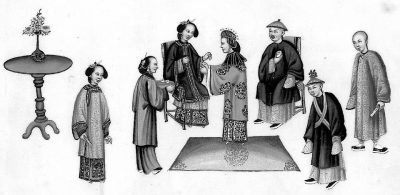
Marriage in Middle Eastern and African societies
Marriage in Middle Eastern and African societies is often deeply intertwined with religious traditions and customary law. In many Middle Eastern countries, marriage laws are heavily influenced by Islamic principles, with marriage seen as a religious duty and a contract between families.
Polygamy, arranged marriages, and the payment of mahr (a dowry from the groom to the bride) are common practices. However, there is also a growing trend towards more modern and egalitarian marriage arrangements, particularly in urban areas.
Marriage practices vary widely in African societies depending on cultural and ethnic traditions.
Marriage is often seen as a communal affair, with families and communities playing a central role in the process. Customary law often governs marriage, with practices such as bride price, polygamy, and extended family involvement being common.
Indigenous and tribal marriage practices
Indigenous and tribal communities worldwide have unique marriage customs deeply rooted in their cultural and spiritual beliefs. These practices often emphasize the importance of rituals, ceremonies, and community involvement in marriage.
For example, in many Native American tribes, marriage is seen as a sacred union blessed by spiritual leaders and celebrated with elaborate ceremonies that involve the entire community. In some indigenous communities, marriage practices are closely linked to traditional ways of life, with rituals and customs designed to ensure harmony and balance within the community.
However, the interaction between modern legal systems and traditional marriage practices can sometimes lead to conflicts and challenges. This has led to ongoing debates about recognizing customary marriages, protecting women’s rights, and preserving cultural heritage within the context of modern legal systems.
Read more: Traversing Cultural Expectations: Balancing Family Values and Individual Readiness for Marriage
In conclusion
The evolution of marriage reflects its shift from a social and economic contract to one rooted in love, choice, and equality. As society changes, marriage continues to adapt to challenges like gender equality, same-sex marriage, and shifting family structures.
Understanding its history offers a broader perspective, fostering respect, mutual understanding, and thoughtful decision-making. By recognizing the forces shaping marriage, individuals can appreciate its significance and contribute to its future evolution.
If you want to see more resources on marriage, check out the Family Science Labs. The lab uses the research of the Institute for Life Management to produce courses, certifications, podcasts, videos, and other tools. Visit the Family Science Labs today.
Photos:
- Sarcophagus of the Dioscures, detail depicting a marriage.
Marble, latter part of 4th century by Ad Meskens via Wikimedia - Other photos are public domain via Wikimedia

